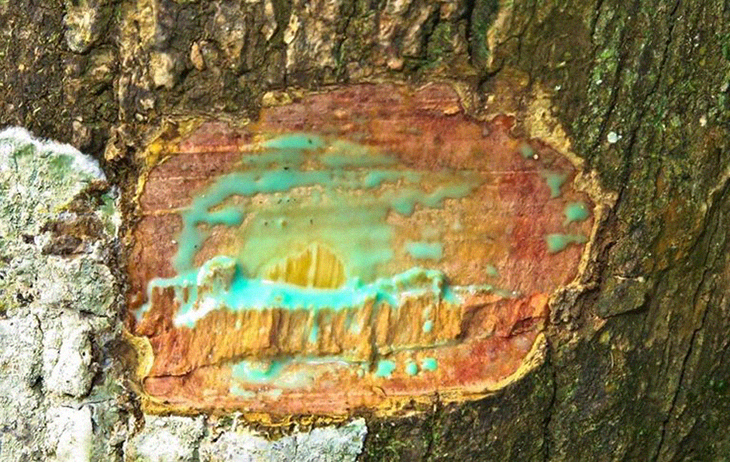
A number of large tropical mining companies could possibly be going greener before they know it, and it’s all due to the plants. How this ‘greener alternative’ to traditional strip mining works is that it allows plants to be the one to absorb the trace minerals, rather than using mining equipment to gather them.
The process, which is called phytomining, requires a particular type of plant species that literally has the ability ‘to suck the soil dry’ of certain minerals such as nickel, zinc, cobalt and selenium.
Unlike regular mining, which uses tons of heavy machinery, pollutes the rivers, and plumes the air with loads of sulfur dioxide, phytomining only requires workers to take off a few feet from a normally 20-foot tall green shrub, allowing the plants to do the work. This was exhibited back in 2015 on a demo site when the so-called “leavings” were collected and burned to make a “bio-ore” that managed to fill up to 20 to 25% weight of nickel.
For those in the mining industry, they are eager to find out just how environmentally-friendly this way of mining can be as compared to the normal, carbon-heavy type of mining. By allowing the plants to gather the materials and minerals means there is no longer a need to root around in the ground for them, like how it’s normally done on such remote islands like Borneo.
In a special report that talks about phytomining in Malaysia, that was published by the journal Grist, senior research fellow at Australia’s University of Queensland, Antony van der Ent, shared, “We can now demonstrate that metal farms can produce between 150 to 250 kilograms of nickel per hectare (170 to 280 pounds per acre), annually.”
“At this stage, phytomining can go full-scale for nickel immediately, while phytomining for cobalt, thallium, and selenium is within reach,” he added.
The Future of Farming Metal
Since van der Ent’s research was published, a number of nickel mining companies, as well as other “metal farmers,” are already looking at how to incorporate this kind of scientific modeling into their own mining work, especially when it comes to the cost. And seeing that these costs are very similar to that of corn farming, except that they yield a much higher amount at around $1,800 gross earnings per hectare, they find that this way could possibly be very profitable for them.
Although the report in Grist talks more about the Borneo phytomining trials, there are have been other trials in areas such as New Zealand, Italy, the United States, Canada, France, Spain and Albania. There are at least 700 recognized “hyperaccumulators” at the moment, which is how they refer to the plant species that have the ability to absorb large amounts of minerals before they deposit them into their shoots, branches and leaves to be collected.
If you happen to run a large mining corporation, the most advantageous part of phytomining is not in the areas with nutrient-rich soil, but rather where the soil is said to be poor in nickel. This is because for areas that have concentrations of just 1% or less, these mining companies have no other choice but to strip their mines. Such locations that are considered the same include Cuba, Indonesia, the Philippines, New Caledonia, and Brazil.
How the process normally works is that it takes a surface layer of the rock and soil from a portion of the ground ‘using acid-leaching heavy machinery to extract the scarce nickel particles,’ which often has a very scarce yield of minerals. Moreover, despite the limited quality of metal that’s mined in that top layer of soil, it then has to be collected and sold to other landfills, which doesn’t give much back to the miners.
Due to COVID and the ongoing pandemic, the mining production has seemingly slowed down, but van der Ent is using his time to ‘develop a hydro-metallurgical extraction method’ so that farmers won’t have to burn the plant trimmings to get the nickel. This way, he will also help lessen any CO2 fumes that are generated in the process, which basically means a greener and more environmental-friendly method all in all.
What are your thoughts? Please comment below and share this news!
True Activist / Report a typo


